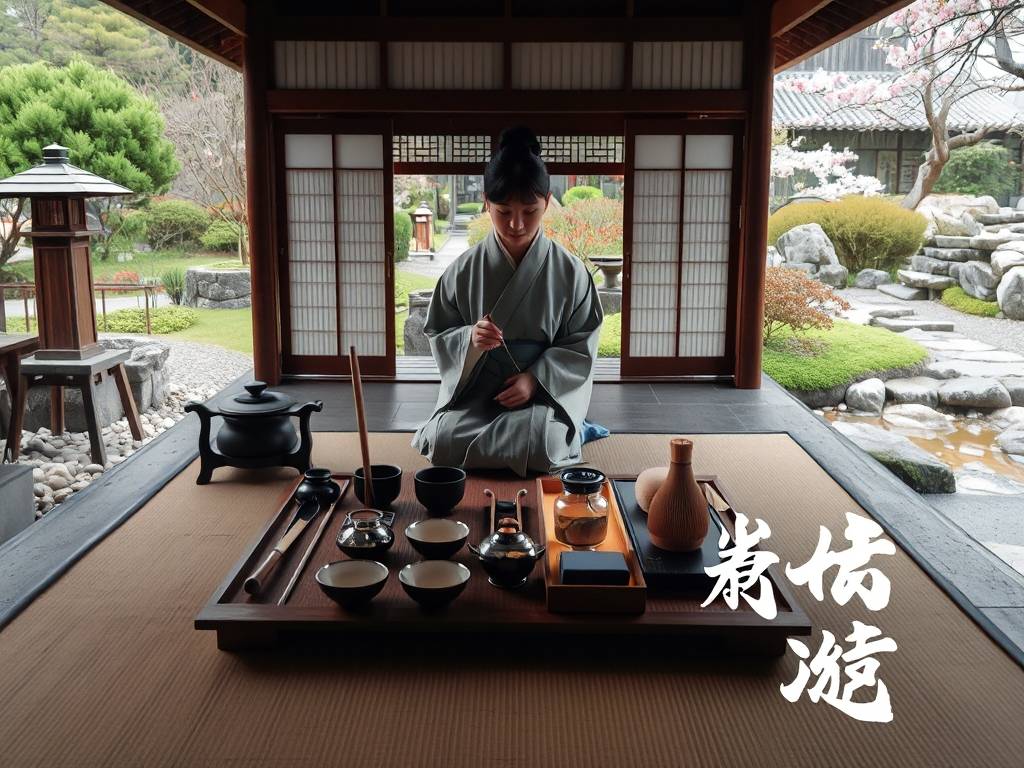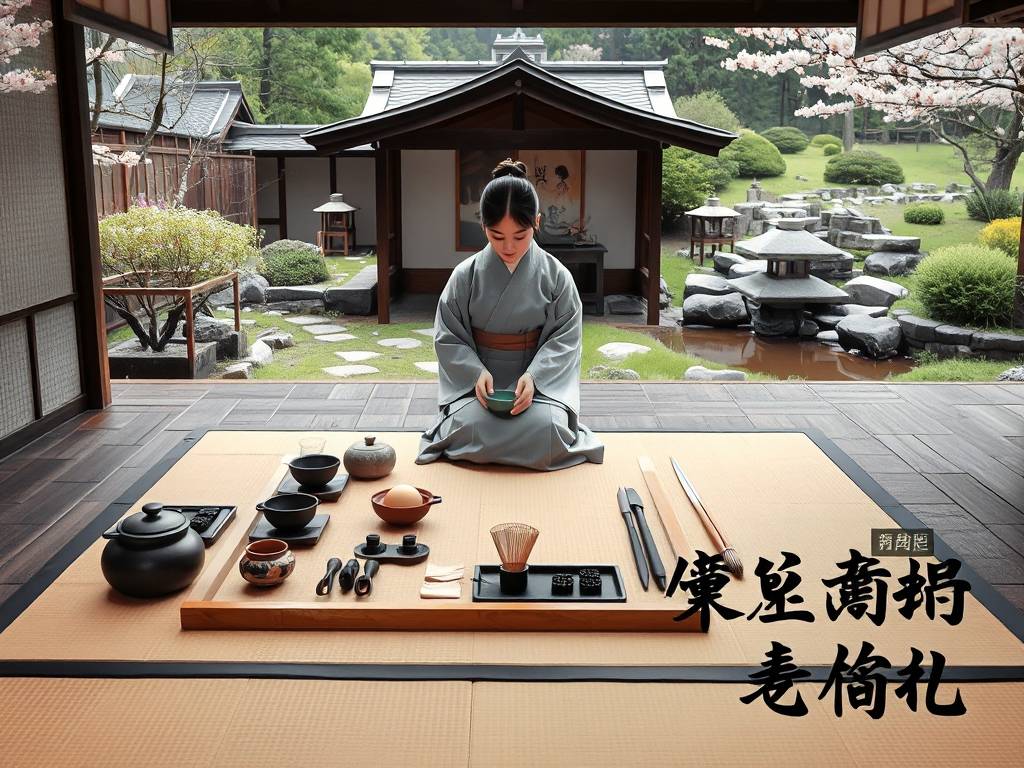Japan Travel
Japan’s Traditional Tea Ceremony Gear Reviews: Read About Tea Tools
The Soul of the Bowl: An Insider's Guide to Japan's Essential Tea Ceremony Tools
Stepping into the world of Chanoyu, the Japanese "Way of Tea," is like learning a new, beautiful language. It's a language not of words, but of gestures, mindfulness, and profound respect, spoken through a curated collection of exquisite objects. For the uninitiated, the array of tea ceremony gear can seem daunting. What is the difference between a chawan and a natsume? Why are some bamboo whisks so expensive? This guide is designed to be your trusted companion, offering deep-dive reviews and insights into the very heart of the tea ceremony: its tools. We'll explore not just what each item is, but the soul it brings to the practice, helping you appreciate the craftsmanship and history in every piece, whether you're a curious observer or an aspiring practitioner.
Let's begin our journey by understanding the core components. A traditional tea gathering, or chaji, utilizes a specific set of implements, each with a name and a purpose. Knowing these is the first step toward a genuine appreciation.

The Heartbeat: The Chawan (Tea Bowl)
The chawan is arguably the most personal and expressive tool in the ceremony. It's not merely a cup; it's a universe of clay, glaze, and fire held in your hands. When searching for the best chawan for beginners, you'll encounter a stunning variety.
-
Review: The Classic Raku Chawan Raku ware holds a special place in Chanoyu, deeply connected to the tea master Sen no Rikyū. These bowls are hand-shaped, low-fired, and prized for their rustic, imperfect beauty and incredible warmth. They are often quite lightweight, making them comfortable to hold. For a beginner, a Raku chawan offers a direct link to tea history. Its thick walls retain heat beautifully for thick tea (koicha), and the textured interior provides excellent friction for whisking. The keyword here is wabi-sabi—the appreciation of imperfection and transience. A Raku bowl embodies this philosophy perfectly.
-
Review: The Elegant Hagi Chawan Originating from Hagi city, these bowls are known for their delicate, crackled glaze that changes color over years of use, a characteristic known as "the seven transformations of Hagi." They are typically taller and more refined than Raku ware. A Hagi chawan is a wonderful choice for those drawn to a softer, more evolving aesthetic. It’s perfect for both thick and thin tea (usucha). When considering how to choose a Japanese tea bowl, think about the season; a dark, heavy bowl might be used in winter, while a light, open one is for summer.
The Whisk's Dance: The Chasen
This intricate bamboo whisk is the engine of the ceremony, responsible for creating the perfect froth on your matcha. Not all chasen are created equal, and understanding the differences is crucial for your tea ceremony gear reviews.
-
Review: The Hand-Carved Kurotakesuji Chasen Made from a single piece of high-quality black bamboo (kurotake), this is the gold standard. The tines are incredibly fine and flexible, allowing for a smooth, effortless whisking motion that produces a velvety microfoam without lumps. A well-made chasen like this will have 80, 100, or even 120 perfectly split tines. The craftsmanship is breathtaking. While it is a premium choice, its performance and durability justify the investment for serious students. This is a prime example of authentic Japanese tea tools at their finest.
-
Review: The Durable Shakuhō Chasen For those just starting their practice or looking for a more robust everyday whisk, the Shakuhō style is an excellent option. It has thicker, fewer tines (usually 16 outer and 2 inner supports) and is less delicate than the Kurotakesuji. It's incredibly sturdy and great for building whisking arm strength. It still creates a lovely foam, though it may not be quite as fine. For anyone compiling a traditional tea ceremony equipment buying guide, this is often recommended as a first chasen.
The Flavor Keeper: The Natsume and Chaire (Tea Caddies)
This is where the precious matcha powder is stored and presented. The choice of caddy speaks volumes about the formality of the occasion.
-
Review: The Natsume (Thin Tea Caddy) Named for its resemblance to the jujube fruit (natsume), this caddy is typically made of lacquered wood and used for serving usucha (thin tea). It has a simple, elegant lid that fits snugly. When looking at Japanese tea caddy natsume reviews, pay attention to the finish and the fit of the lid. A good natsume should feel balanced and the lid should not be too loose or too tight. They come in various colors and lacquer styles, often chosen to reflect the season.
-
Review: The Chaire (Thick Tea Caddy) Used for the more formal koicha (thick tea), the chaire is a ceramic jar, often with an ivory lid and a shifuku (a silk cord and pouch). These are among the most treasured items in a tea practitioner's collection, sometimes being centuries-old heirlooms from China or Korea. They are small, delicate, and carry a deep sense of history. For most beginners, appreciating a chaire from a distance is the first step; owning one comes much later in the journey.
The Water's Journey: The Kama and Hishaku (Kettle and Ladle)
The iron kettle (kama) sits in the hearth, its gentle simmer providing the soundtrack to the ceremony. The bamboo ladle (hishaku) is used to transfer hot and cold water.
-
Review: The Cast Iron Kama A good cast iron kettle is essential for achieving the right water temperature for matcha. It heats evenly and maintains temperature superbly. The iron also imparts beneficial minerals into the water, subtly softening and improving its taste—a key point in any discussion on essential matcha ceremony tools. When reviewing a kama, look for a sturdy build, a well-fitting lid, and a comfortable handle that stays cool. The ritual of listening to the different sounds of the boiling water ("the winds in the pines") is a core part of the experience.
-
Review: The Takegushi Hishaku The bamboo ladle seems simple, but its length and curve are precisely designed. It's crafted from a single piece of bamboo, with a node in the center of the cup for strength. They are often seasonal; a longer one for the New Year, a shorter one for the regular season. They are consumable items, typically replaced annually, which reflects the Buddhist concept of impermanence.
Bringing It All Together: The Fusa and Chashaku (Tea Scoop and Container)
Finally, we have the elegant tools for measuring the tea.
-
Review: The Chashaku (Bamboo Tea Scoop) This slender scoop, often hand-carved by tea masters themselves, is used to measure the perfect amount of matcha from the caddy into the bowl. Each chashaku has a name and a story. The curve and length are designed for a graceful, precise motion. Using a well-crafted chashaku feels like an extension of your hand. It is a deeply personal item and a wonderful first acquisition.
-
Review: The Mizusashi (Fresh Water Container) This lidded container holds the cold water used to cool the kettle or rinse bowls. It can be ceramic, glass, or lacquered wood, and its style is chosen to harmonize with the other tools and the season. A simple, clear glass mizusashi in summer can evoke a feeling of coolness, for instance.

In conclusion, the tools of the Japanese tea ceremony are far more than mere utensils. They are vessels of tradition, art, and philosophy. Each chawan, chasen, and natsume is a carefully considered choice that contributes to the holistic experience of harmony, respect, purity, and tranquility. By understanding the nuances and craftsmanship behind these objects, we don't just learn about making tea; we begin to understand the very Way of Tea itself. We hope this guide has illuminated the path, helping you to not only select the right tools but to feel the soul within them.
相关文章
- Kyoto’s Traditional Shopping Gear Reviews: Read About Shopper Tools
- Japan’s Budget Accommodation Gear Reviews: Read About Travel Equipment
- Tokyo’s Transportation Gear Reviews: Read About Commuter Tools
- Japan’s Mountain Star Gazing Gear Reviews: Read About Telescope Tools
- Japan’s Summer Surf Gear Reviews: Read About Beach Equipment
- Kyoto’s Fall Foliage Gear Reviews: Read About Hiking Equipment
- Japan’s Budget Dining Gear Reviews: Read About Food Tools
- Tokyo’s Science Museum Gear Reviews: Read About Exhibit Tools
- Japan’s Island Family Beach Gear Reviews: Read About Kid Equipment
- Japan’s Winter New Year’s Gear Reviews: Read About Celebration Tools
发表评论
评论列表
- 这篇文章还没有收到评论,赶紧来抢沙发吧~


